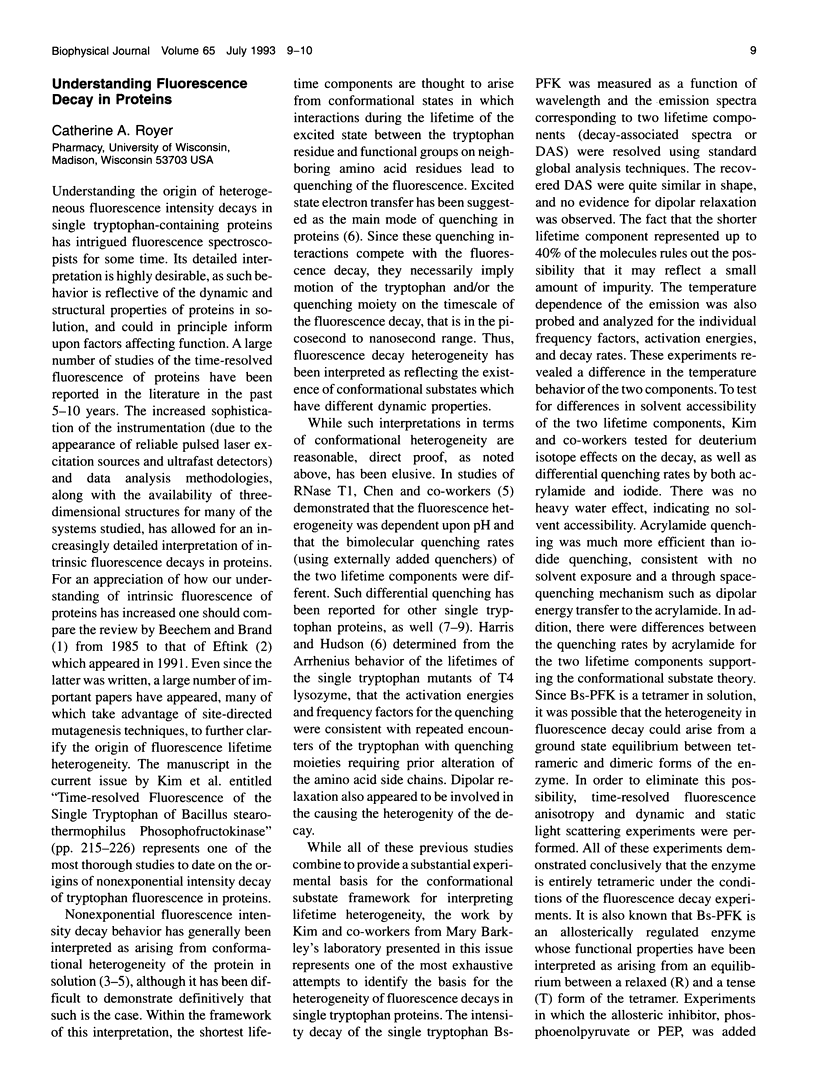Full text
PDF

Selected References
These references are in PubMed. This may not be the complete list of references from this article.
- Alcala J. R., Gratton E., Prendergast F. G. Interpretation of fluorescence decays in proteins using continuous lifetime distributions. Biophys J. 1987 Jun;51(6):925–936. doi: 10.1016/S0006-3495(87)83420-3. [DOI] [PMC free article] [PubMed] [Google Scholar]
- Atkins W. M., Stayton P. S., Villafranca J. J. Time-resolved fluorescence studies of genetically engineered Escherichia coli glutamine synthetase. Effects of ATP on the tryptophan-57 loop. Biochemistry. 1991 Apr 9;30(14):3406–3416. doi: 10.1021/bi00228a008. [DOI] [PubMed] [Google Scholar]
- Beechem J. M., Brand L. Time-resolved fluorescence of proteins. Annu Rev Biochem. 1985;54:43–71. doi: 10.1146/annurev.bi.54.070185.000355. [DOI] [PubMed] [Google Scholar]
- Chen L. X., Longworth J. W., Fleming G. R. Picosecond time-resolved fluorescence of ribonuclease T1. A pH and substrate analogue binding study. Biophys J. 1987 Jun;51(6):865–873. doi: 10.1016/S0006-3495(87)83414-8. [DOI] [PMC free article] [PubMed] [Google Scholar]
- Eftink M. R. Fluorescence techniques for studying protein structure. Methods Biochem Anal. 1991;35:127–205. doi: 10.1002/9780470110560.ch3. [DOI] [PubMed] [Google Scholar]
- Eftink M. R., Wasylewski Z. Fluorescence lifetime and solute quenching studies with the single tryptophan containing protein parvalbumin from codfish. Biochemistry. 1989 Jan 10;28(1):382–391. doi: 10.1021/bi00427a053. [DOI] [PubMed] [Google Scholar]
- Harris D. L., Hudson B. S. Photophysics of tryptophan in bacteriophage T4 lysozymes. Biochemistry. 1990 Jun 5;29(22):5276–5285. doi: 10.1021/bi00474a009. [DOI] [PubMed] [Google Scholar]
- Hutnik C. M., Szabo A. G. Confirmation that multiexponential fluorescence decay behavior of holoazurin originates from conformational heterogeneity. Biochemistry. 1989 May 2;28(9):3923–3934. doi: 10.1021/bi00435a045. [DOI] [PubMed] [Google Scholar]
- Stayton P. S., Sligar S. G. Structural microheterogeneity of a tryptophan residue required for efficient biological electron transfer between putidaredoxin and cytochrome P-450cam. Biochemistry. 1991 Feb 19;30(7):1845–1851. doi: 10.1021/bi00221a017. [DOI] [PubMed] [Google Scholar]


